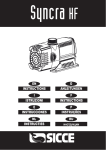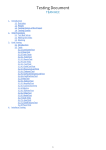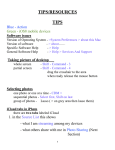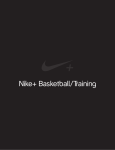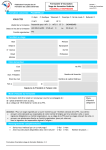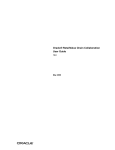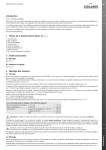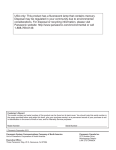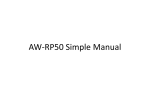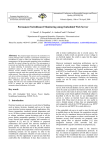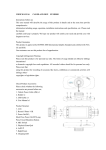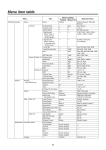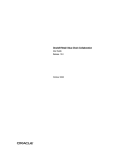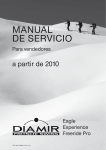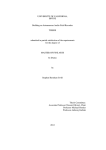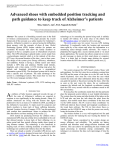Download 2011 SKI MOUNTING SPECS
Transcript
SKIS 2011 SKI MOUNTING SPECS Measurements taken from tail, in millimeters: MODEL Gigawatt* Megawatt* AMPerage / Element* Zealot* Verdict Warrant / Ember Justice Drift /Starlet Aspect Stigma / Syncra Guru SIZE TELE: PIN LINE (mm) ALPINE: MID-BOOT (mm) 25.5 and smaller boot 26.0 to 27.5 boot 28.0 and larger boot All Boot Sizes 195 994 999 1004 874 185 949 954 959 829 188 928 933 938 808 178 885 890 895 765 185 949 954 959 829 175 904 909 914 784 165 859 864 869 739 192 968 973 978 848 182 940 945 950 820 190 956 961 966 836 180 912 917 922 792 170 868 873 878 748 188 937 942 947 817 178 894 899 904 774 168 850 855 860 730 158 807 812 817 687 185 960 965 970 850 175 898 903 908 776 186 937 942 947 817 176 893 898 903 773 166 849 854 859 729 156 805 810 815 685 186 926 931 936 806 176 882 887 892 762 166 838 843 848 718 156 795 800 805 675 176 857 862 867 737 168 823 828 833 703 160 789 794 799 669 152 757 762 767 637 176 869 874 879 749 167 827 832 837 707 158 790 795 800 670 Use 3.6 Ø x 9.5mm drill bit for non-metal skis. For metal, use 4.1 Ø x 9.5mm and tap for metal skis. Also cross reference with binding manufacturer's screw recommendation, if any. For alpine and AT, we recommend using white wood glue as a sealant. For tele, for maximum screw retention, we recommend 1-hour epoxy. Please read and know proper telemark mounting best practices. Among many guidelines, these include using a mandatory 8-10 Nm screw torque with 1-hour epoxy. Alpine binding screw mounting torques are not enough for telemark binding forces. Any less torque than 8-10 Nm does not create enough clamping force to overcome upward binding force. As a result, your screws can loosen, resulting in the binding ripping out. *Reference the forward mounting recommendations on the next page for alternative positions. 1.12 F11 BD TECH MANUAL SKIS 2011 SKI MOUNTING SPECS MEASURE It’s important that you accurately determine your mounting location based on the recommended specifications (see chart on the Mounting Specs page) with personal preference adjustments, if applicable or known. Measure twice, drill once. Alpine: For AT or alpine mid-boot, the ski is marked with our recommendation. We list in our specs what the exact location of this mark is on the ski, so be sure to double-check tolerances as it can shift by a few mm’s. We don’t recommend moving the mount location backward from here, but it’s personal preference if you want to mount select skis forward. See our recommendations for forward mounting on this page. Tele: Again, things get complicated with tele. If you base all things off of the chord-center (or some reference point along those lines), different boot sole lengths will affect the mounting position and its relationship to the sidecut and overall length. In the BD mounting chart you’ll see that we break it down into three overall shell sizes and give recommendations based on that. The middle 26-27.5 is the baseline, shift 5 mm forward for 28.0 and up, and 5 mm backward for 25.5 and smaller. This keeps a good relationship between balance point of the ski and, most importantly, mid-boot in relation to the center of the sidecut. On BD boots we have that mid-boot marked on the shell itself to keep this easy, which is based on the distance from pinline to heel. When in doubt, trust that lining up this mark with the mid-boot mark on the ski is your best option, as modern designs have thrown the old standard rules of thumb out the window. *FORWARD MOUNTING Binding mount position dramatically affects your ski’s performance characteristics. We spend quite a bit of time dialing in this location for each model and for each length of ski. During development, our test skis end up looking like Swiss cheese from all the mount holes. The relationship between radius arc center, running length, and balance of stiffness all play into this decision. That said, we recognize that personal preference also plays an important role. You know your tastes and skiing style, and if you prefer a more centered stance for a more playful feel, the following skis have excellent alternative mounts forward of the recommended boot midsole mark. Gigawatt: Up to +3 cm With the 2011 Megawatt’s stiffer tip, you can really stomp on the nose and trust it. Getting more centered on this ski gives it a more playful twist. If you’re using it as an everyday ski and want to arc on hard pack, mount at +2.5 cm. If you want a more classic powder ski feel, stick with the recommended position. Zealot: +1.5 to +2 cm (182 cm only) BD athlete Zack Griffin goes large at +3 cm. We’d recommend no more than +2 cm, but he seems to make it work. Megawatt: Up to +2.5 cm If you’re interested in the playfulness of the AMPerage, but want the dampness and power of a metal laminate GS ski at times, shift the mounting point of the 182 cm Zealot forward between 1.5 cm to 2 cm, max. Ski the 192 cm length on the recommended mounting point—it’s just plain old built for speed and power. The tail is less rockered than the 182 cm version, so the mounting point is already more centered in relation. Don’t mess with it. AMPerage: +2.5 cm The AMPerage can be safely mounted up to +2.5 cm before you start washing out your tails. However, BD athletes Johnny Collinson and Callum Pettit say to go with +3 cm. If you’re of their likes, we can’t argue with them. MOUNTING TIPS “Standard protocol” varies from shop to shop, so here, in detail, is what we feel makes for a solid binding mount. PRECISION This is paramount for telemark bindings, which have much higher peak loads than an alpine or AT binding. What is often overlooked is that the ISO standard minimum for binding pull-out strength for alpine skis is 292 pounds per screw, which is fine for alpine binding systems but is not nearly enough for an active tele binding. Our pullout strength exceeds 440 pounds per screw, but that pullout strength is only achieved with a precision mount. For example, that strength drops 40% if the screw doesn’t thread in straight. How many times have you chased a screw hole that wasn’t completely in line with the binding and you just kind of forced it in, cocked over, until it snugged down straight? That's a major no-no. TORQUE SPECS Most alpine specs have around 4-5 Nm per screw when you are using a TLD (torque limiting device). For an active tele binding you need upwards of 8-10 Nm. Some company’s skis may not take this much, but for BD skis, feel free to crank it down this much (in fact you must on bindings such as the O1.) In addition, we recommend a 3.6 Ø drill bit to get the best thread retention based on the minor diameter of the screw. This tighter screw fit also mandates a higher torque to get the screw into the ski, so again, the traditional TLD setting probably would not seat the screw tightly enough. F11 BD TECH MANUAL www.BlackDiamondEquipment.com | 1.13 SKIS MOUNTING TIPS WITCHCRAFT With tele there’s a bit of witchcraft at every corner. All bindings are not the same and in fact have drastically different forces associated with each. The boot size and skiing style greatly influence the degree of mounting sloppiness that can be tolerated. In addition, the screws, screw heads and shapes are different, and the industry lacks any sort of standard or unification, resulting in very specific mounting issues. For example: The tapered-head screws provided with K2’s older inserts work fine with BD bindings except for the O3, which requires a flat-head screw that interfaces with the plastic. We supply a substitute screw (See Black Diamond Spare Parts Manual) to be used with the O3 binding and K2 inserts. For the O2 and O1, the screw interfaces with a tapered stainless steel or aluminum section, and the K2 screw is fine but can require periodic tightening. CLEANLINESS Be sure to remove any dust or shards from the drilled hole. It is important to use clean screws, without any chunks of material embedded from a previous mount. A screw with smooth threads ensures proper thread cutting when you turn the screw in. It is also important to apply adequate downward pressure when starting the screw so the threads cut immediately and don't spin and grind away the first engagement. Tapping the hole first is never a bad practice regardless of metal or not. When mounting thinner skis that require the screws to be ground down shorter, be extra careful to grind a slight taper and to avoid leaving any sharp burrs which will not cut a smooth thread into the ski. EPOXY We recommend using epoxy for all telemark mounts. Epoxy can increase your overall maximum pullout strength, but most importantly acts as a buffer to decrease screw-loosening possibilities. This in turn can lead to a degradation of the ski’s core and increase peak shock loads that will eventually result in the binding ripping out of the ski. For alpine and alpine touring bindings, if you don’t prefer epoxy, use simple wood glue to seal the hole and lubricate the screw as it is being twisted in to help achieve suitable clamping force for given torque values. O1 BINDING SCREW TORQUE VS. CLAMPING FORCE Max peak screw force possible during use = 400 lb per screw When binding force peaks above clamping force screws can loosen: Example (as shown in bottom left diagram): If torqued only to 5 Nm then clamp force only equals 275 lb. When torqued to 6.75 Nm you get the minimum 400 lb of clamping force. Any loosening creates a shock loading scenario and risk of pull out increases significantly. Torque Screws to 8 Nm and always use epoxy! Note: 8 N-m is way more than you think! O1 screw torque mounting spec = 8 N-m per screw Epoxy BINDING SCREW INSTALLATION TORQUE VS. CLAMPING FORCE Epoxy EPOXY VS. NO EPOXY Dry Dry Pounds Clamping Force N-m 500 Pounds Clamping Force 400 300 200 100 8.0 7.5 7.0 6.5 6.0 Time 0 2 3 4 5 6 7 8 N-m Torque per screw 1.14 F11 BD TECH MANUAL SKIS MOUNTING TIPS JIGS The BD Jig is a great tool for precision tele mounts and keeping the heel block in the prescribed location every time or if you don’t have the actual boot to work with. (Sorry if you normally mount skis with the tips facing left. Perhaps you can stand on your head or mount behind your back, Jimi style.) Fully support the ski so that when applying drilling force you don’t flex the ski; this is crucial because it ensures that the holes are perpendicular. Some non-BD skis can get quite thin, so make sure your drill bit and provided screws are not going to dimple the base, especially at the heel block areas. Be careful on the Fritschi jig in case you have to pull the clamp boots off for maximum width, as well as making sure you have all four arms with the boots facing the correct direction. We highly discourage any type of paper template mount as you will never achieve full strength and can also compromise the overall strength of your binding. HOLES AND SCREWS For Fritschi AT and BD tele bindings, 3.6 Ø x 9.5 mm is the recommended drill bit and depth for our skis. However, each ski manufacturer has a recommended hole diameter and each binding screw design should have a specific hole diameter recommendation. Confused about which to use? Put down the drill and contact the manufacturer. If all else fails, use the binding recommendation and tap the hole. As a rule of thumb, the more expected force on the system, the higher torque the screws are going to need to resist the resulting binding force acting against it. When that relationship is out of whack, the screws can begin to loosen and even a single loose thread will dramatically affect pullout strength. It can also slowly degrade core-retaining properties by slight movements of the screw over time, again reducing pullout strength. Using torque limiting power drills is usually a bad idea unless you’re skilled in the art. We recommend hand tightening each screw with a TLD-enabled hand posi-driver, making sure that each screw goes directly and perpendicularly in and then doing a final torque spec twist on each screw. If for some reason you don’t have a TLD and are working on BD skis and bindings, hand tighten more than you think—pushing down with all your strength while turning the screw means that you’re probably at around 10 Nm, which is fine for BD’s O1 binding or skis. RECAP OF THINGS NOT TO DO: Don’t re-use old screws that have crap plugged in the threads. When you screw that into a new ski you are cutting crappy threads into the core and compromising strength. If you need to grind screws for some reason (e.g., the ski is thinner than the screw design provided), be extremely careful not to leave any burrs—these will mess with the thread cutting of the ski core. If you get a spinner and strip a hole, don’t half-ass it—fix it right by putting a heli-coil in. Don’t reverse bend the ski when applying drilling pressure. Support it from beneath so that the screw hole is perpendicular to the ski. Even a small amount of flex will change the angle and you'll lose full pullout strength potential. Don't grind out your initial hole threads by carelessly spinning the screw without downward applied force. WAXING AND STORAGE TIPS As with any ski, frequent waxing helps prolong base longevity. During long-term storage (i.e., the off-season), leaving a thick coat of wax on the base will help prevent oxidation. F11 BD TECH MANUAL HOW-TO VIDEO www.BlackDiamondEquipment.com | 1.15





